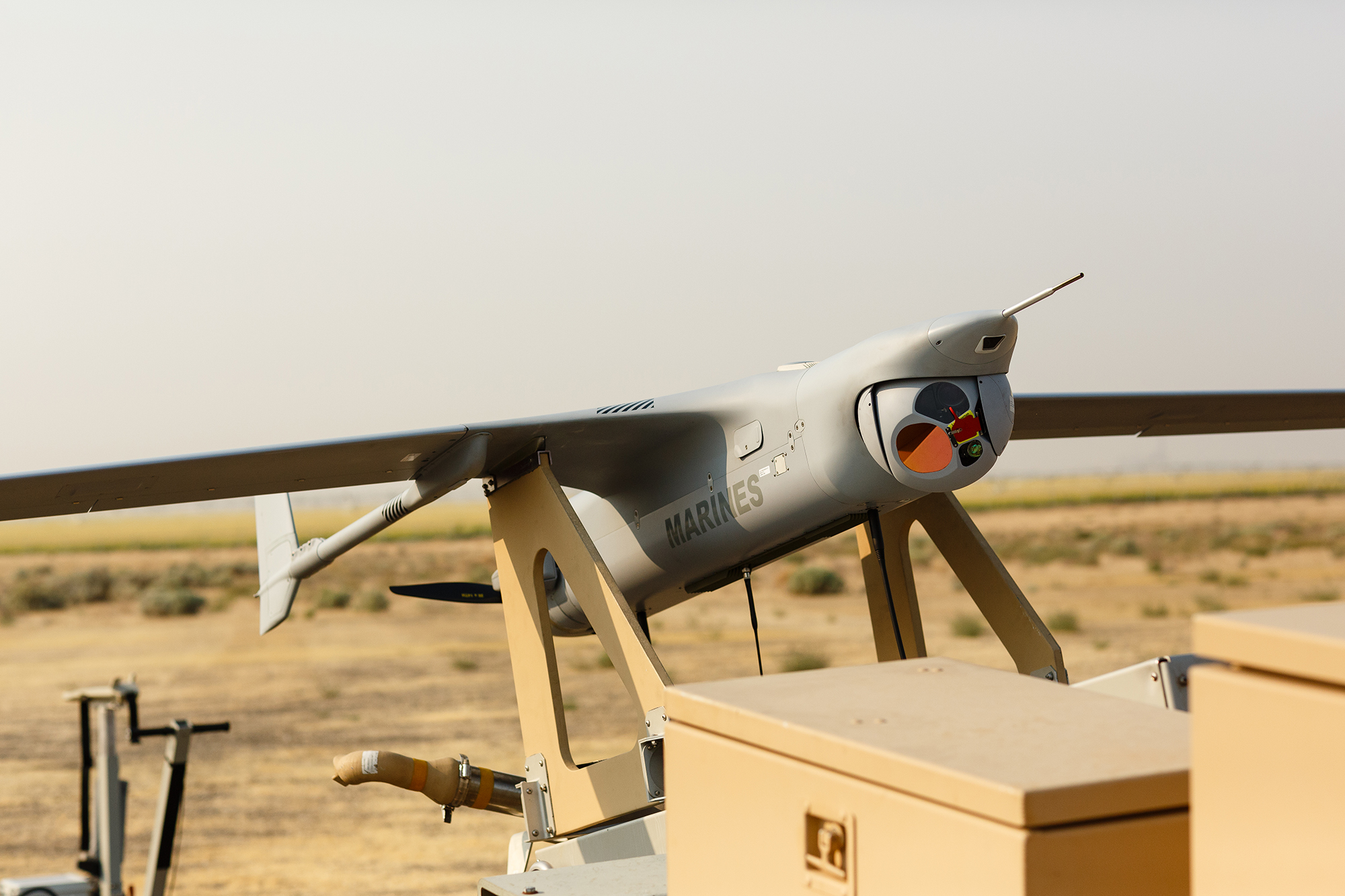Boeing Insitu Integrator drone, also known as the RQ-21 Blackjack, which has traditionally been used for Intelligence, Reconnaissance, and Surveillance (ISR) roles, has achieved a new feat by demonstrating that it could drop small precision-guided Shryke munitions on designated targets.
On December 12, Insitu announced the successful demonstration and published a video of an Integrator carrying out the testing.
“We demonstrated a low signature munition with a safe separation sensor, fuze, and warhead on Integrator,” said Kyle Bowen, Corvid Technologies Director of Business Development.
He further added that the “Integrator delivered the munitions within 1-2 meters of the target in each test flight. We couldn’t have asked for a more successful demonstration.”
The test included the dropping of two GPS-guided Shryke inert munitions from Integrator that had been trained on ground targets. The demonstration was carried out in association with L3Harris Technologies and Corvid. There is little information about these small munitions, but according to Insitu, Shryke is known for its multi-mission precision strike and versatility.
“The two rounds of munitions were seamlessly fitted into Integrator’s CG [center-of-gravity] payload bay, and several mission sorties were executed demonstrating advanced navigation, targeting, and payload delivery systems,” Insitu’s Vice President of Programs, Engineering & Flight Justin Pearce said. He said the capability offers more flexibility in dynamic battlefields by combining kinetics with the drone’s proven endurance and range.
In addition to this, a MIL-STD-1316 Electronic Safe and Arm Device (ESAD) from L3Harris was placed on the Integrator to enable post-flight retrieval of munitions that remained installed and to offer safety-critical energetic systems initiation-on-command.
According to Steve Stasiak, general manager of L3Harris Technologies, “the ESAD was designed for applications that require a reliable arming and firing sequence with precise timing events, as well as vital personnel safety precautions. This capability was validated on Integrator, and the performance of the ESAD configurations during the flight test was highly satisfactory to us.”
The company stopped short of specifying the place and timing of the test. However, the demonstration seems part of a larger initiative to provide kinetic capabilities for the relatively small Integrator drone that has been taking shape for several months.
Reports in September 2023 indicated that to allow the Integrator to deliver small, accurate munitions and direct them to their targets, Insitu was collaborating with several weapons developers and US Government (USG) organizations.
The company noted that the RQ-21 Blackjack version of the Integrator successfully deployed a variety of inert kinetic payloads in September 2021 for a US Navy test program. At the time, it said that various other munitions were being tested.
It was disclosed in October that Intergrator will soon be used with loitering munitions produced by the Australian company Innovaero to provide longer-range indirect strike capability.
Additionally, the company unveiled a modification kit in April that gives the UAV the capacity to take off and land vertically. The traditional kind variant needs to be launched using a pneumatic catapult.
However, the new Integrator body is lifted off a ship’s deck by the so-called lying Launch and Recovery System (FLARES), which employs a detachable, all-electric package akin to a quadcopter.
What Do We Know About The RQ-21 Blackjack
Integrator is a long-endurance, multi-mission unmanned aerial vehicle (UAV). The baseline configuration is 8.2 feet long and has a wingspan of 16 feet. It has a ceiling of 19,500 feet, a maximum endurance of more than 24 hours, and a maximum horizontal speed of more than 90 knots, or more than 103 miles per hour.
According to the manufacturer, “Integrator, a NATO Class 1 Small UAS (DoD Group 3 UAS), offers more than 24 hours of endurance and carries up to 40lb of payload capacity. Payload integrations are accommodated in the center CG bay, two wing trays, and two wing-mounted hardpoints. Integrator’s multi-payload capacity allows our customers to carry multiple munitions and transition between kinetic and non-kinetic objectives as the mission requires.”
Before the weaponry was added recently, intelligence, surveillance, and reconnaissance (ISR) missions were the main uses for the Integrator. Multiple payloads can be carried in the 61kg (135lb) craft’s nose, internal bay, and underwing stations.
According to Insitu, an ISR turret is usually mounted on the nose, and the payload bay can hold a communications relay payload, a wide area motion imagery sensor, a wide area maritime surveillance sensor, a synthetic aperture radar, or one of several signals intelligence/electronic warfare payloads.

The drone is usually launched using a trailer catapult and recovered using a line and hook mechanism. The UAV is available in an extended-range variant and may be modified for vertical takeoff by installing a second carrier system.
One of its primary characteristics is its modular payload capacity, which can hold signals intelligence packages in addition to synthetic aperture radars, wide-area motion imagery (WAMI) sensors, and wide-area maritime surveillance sensors for intelligence, reconnaissance, and surveillance (ISR).
It also has an infrared and electro-optical camera turret mounted beneath its nose. Typically, the drones operate within the visual range of their control centers. Still, equipped with tiny satellite datalink systems extending beyond visual range, they can function at a greater distance.
The drone’s weaponization may bolster its users’ capability across the board. The US Navy and the US Marine Corps typically operate the drone. However, the Marines are divesting the drone, as revealed in the 2021 annual update of the Force Design 2030.
The Marine Corps declared in the statement that it has “started the divestment of all RQ-21 aircraft.”
As Insitu continues to add newer capabilities to this UAV, it may become an attractive, affordable option for the US Navy, the Marines, as well as other operators or potential operators, especially in the wake of an increasingly volatile situation in the Indo-Pacific, which has made the US and its allies to sit up and bolster its capabilities at the seas.
- Contact the author at Sakshi.tiwari9555(at)gmail.com
- Follow EurAsian Times on Google News